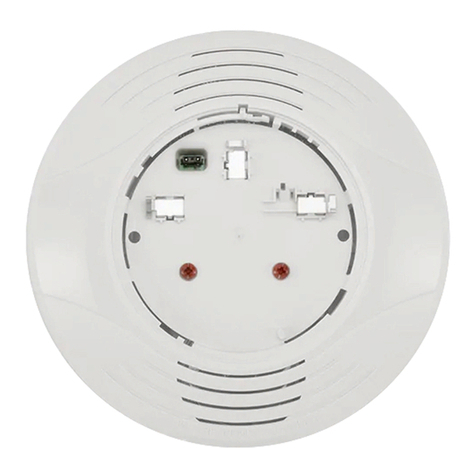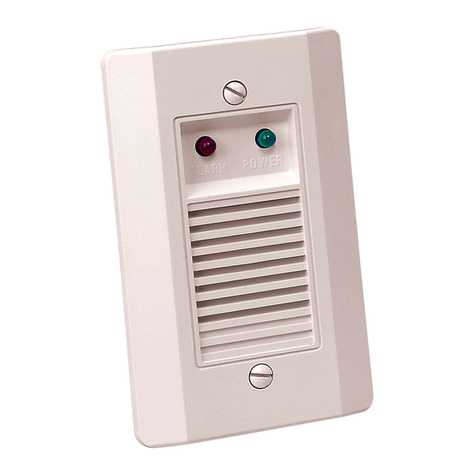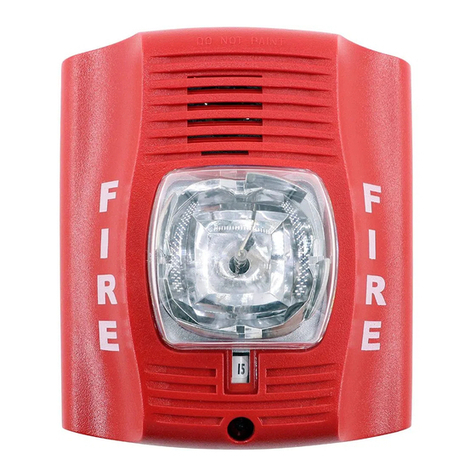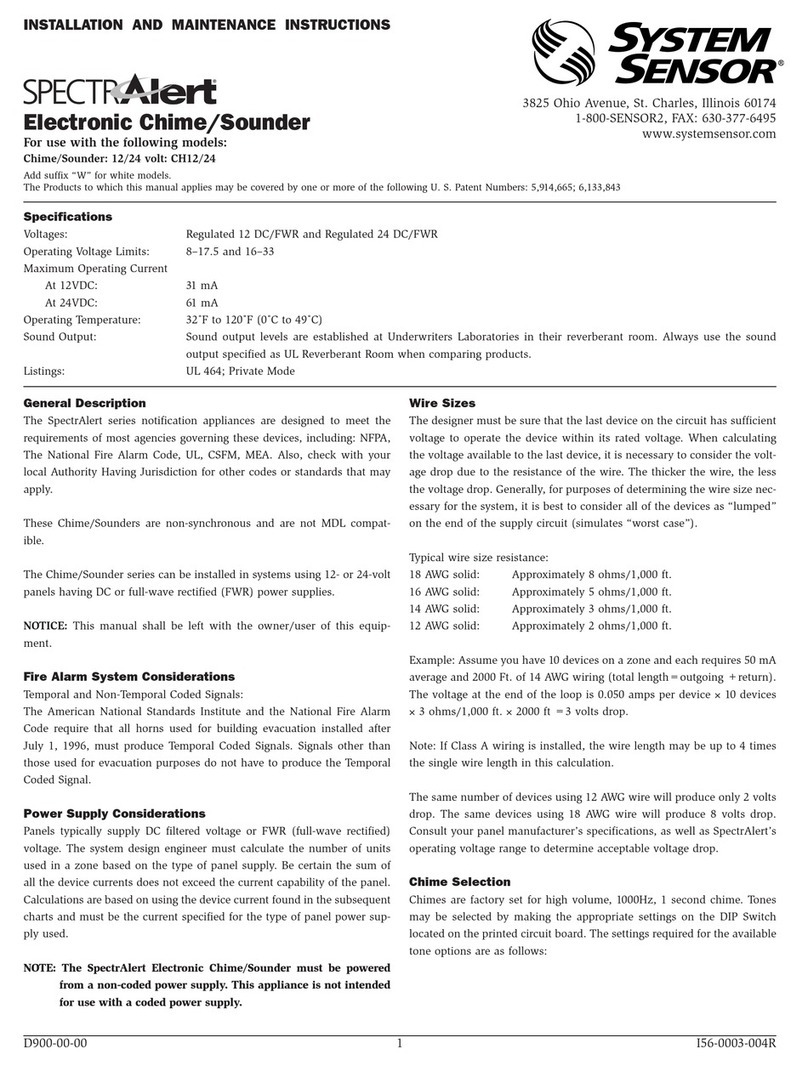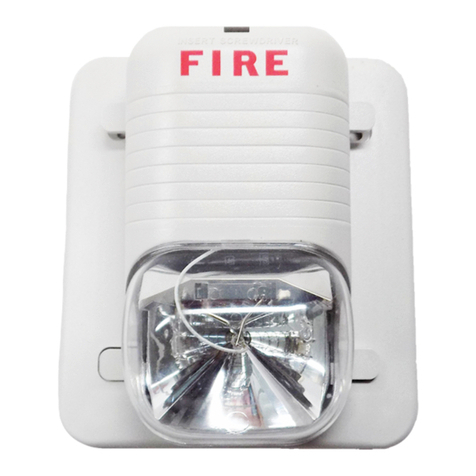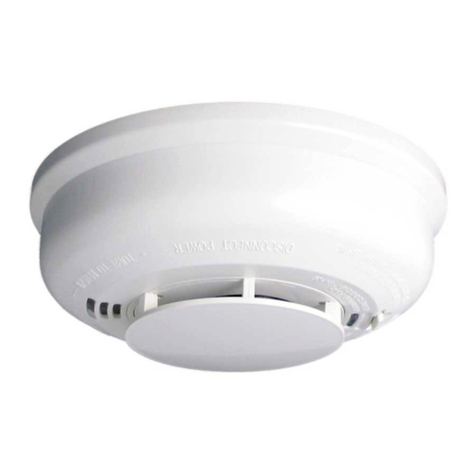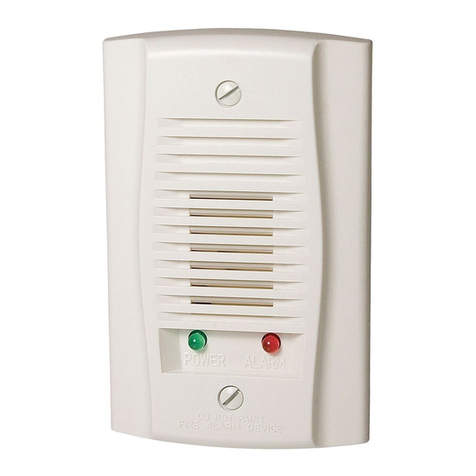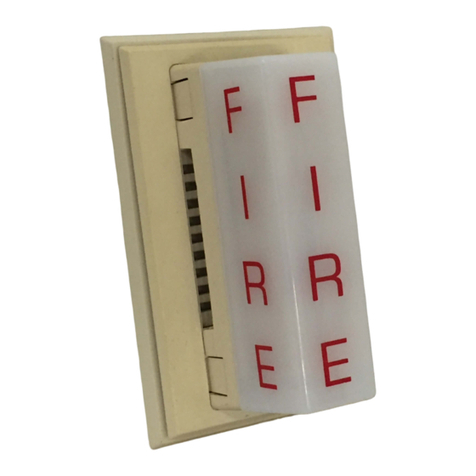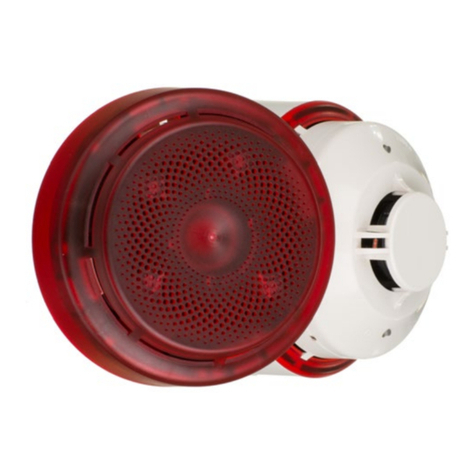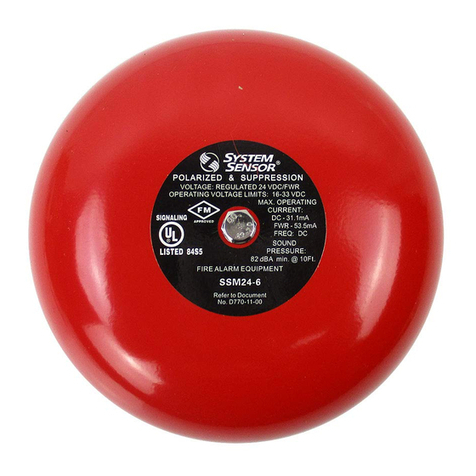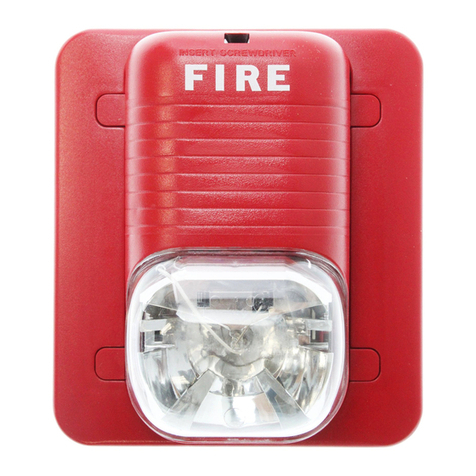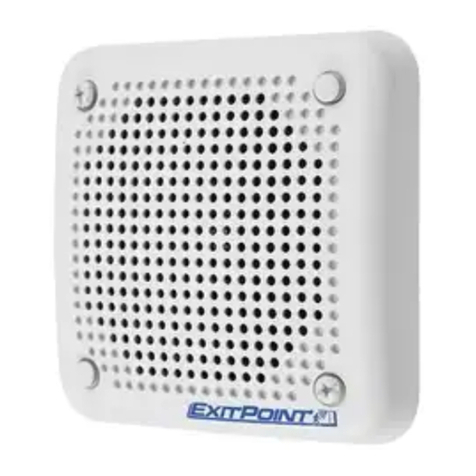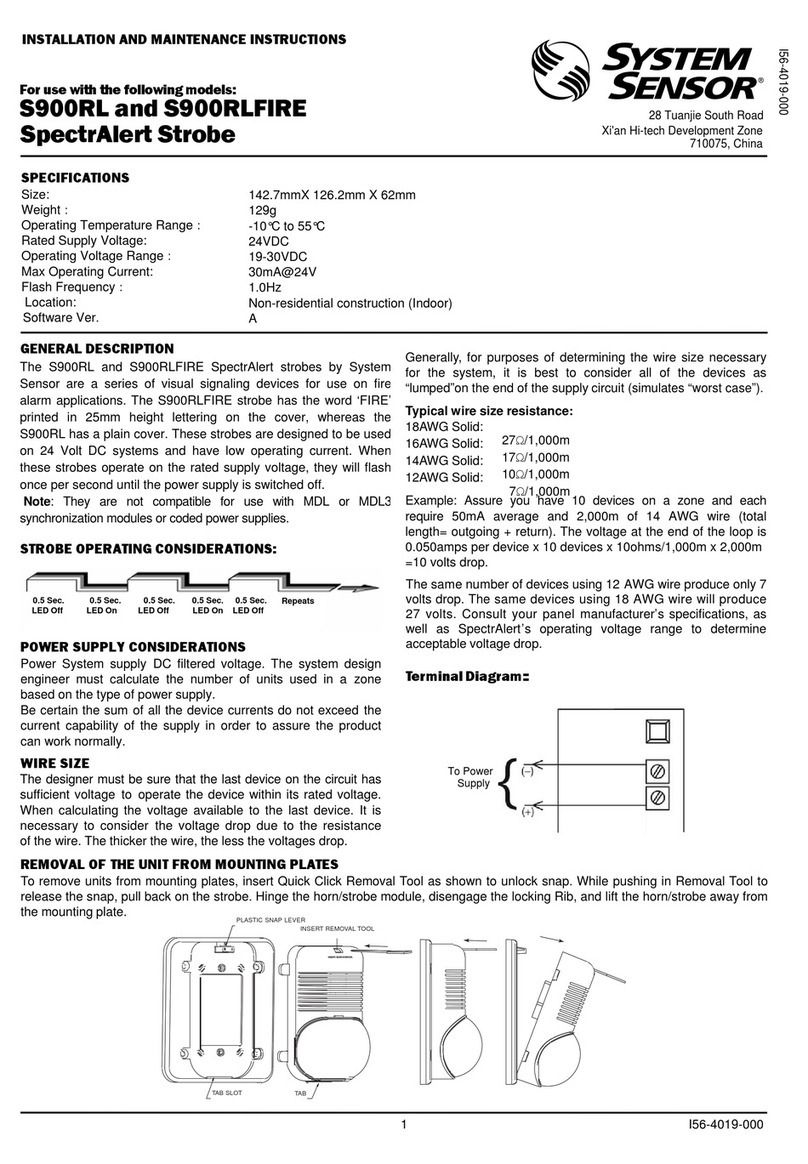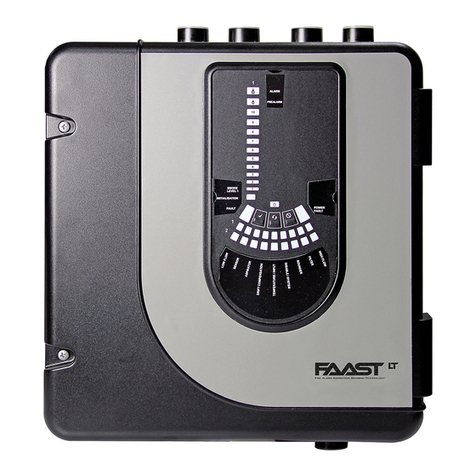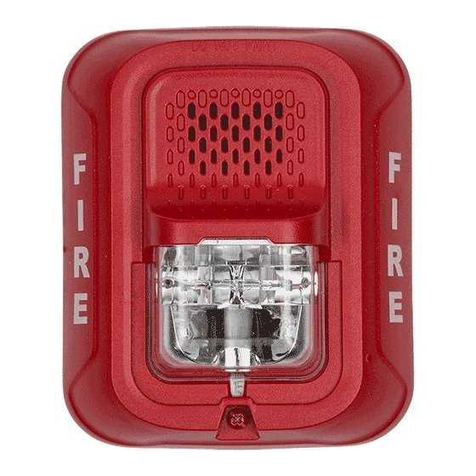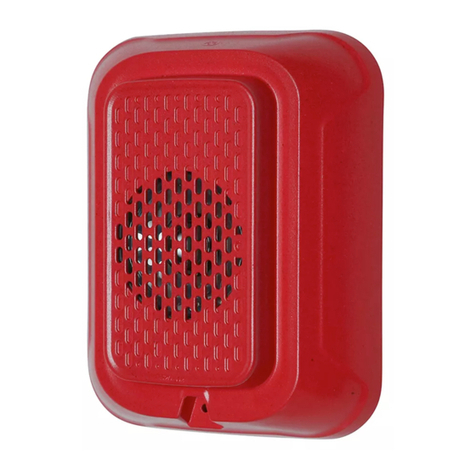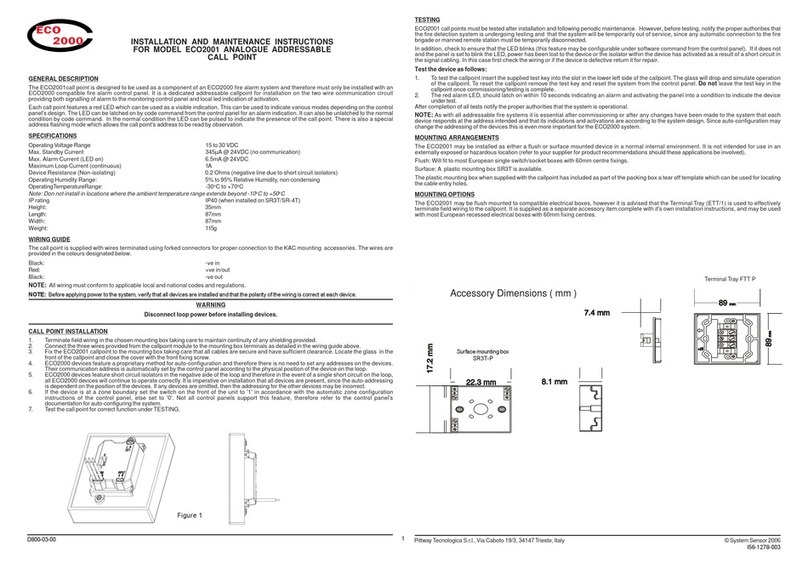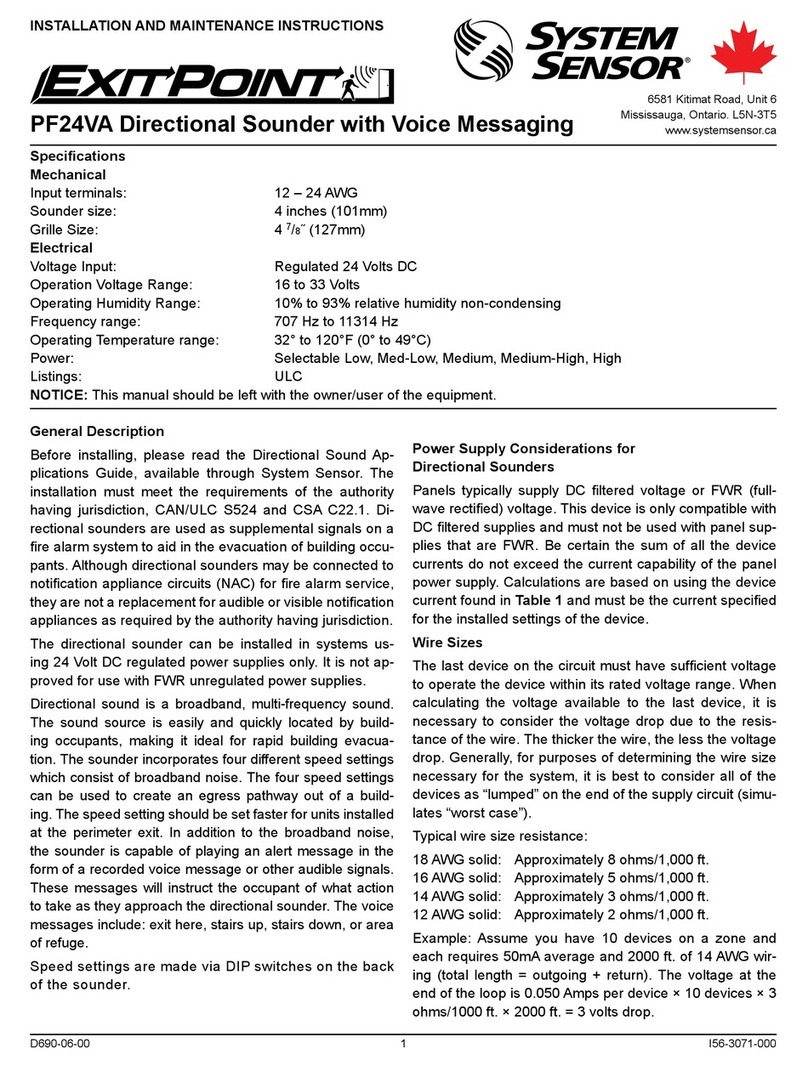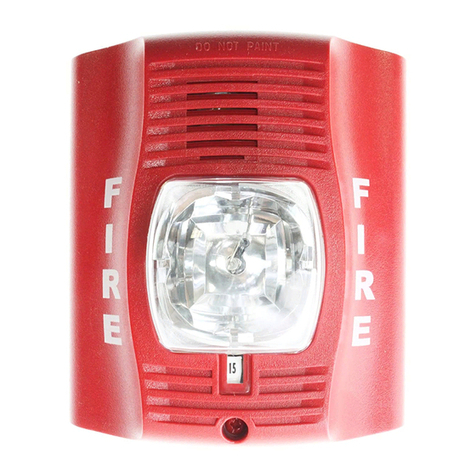
Figure 3. Test Button Location and Operation:
If an alarm fails the above test method, its wiring should be
checked. If the alarm still fails after rewiring, it should be replaced.
Functional Gas Test
NOTE: Check with local codes and the AHJ to determine whether
or not a functional gas test is necessary for an installation.
Solo C6 brand canned CO testing agent may be used to verify the
alarm’s ability to sense CO by utilizing the functional speed-up
test feature of the CO1224A as follows:
1. Press the test button as described in Testing above.
2. Once the alarm has entered the speed-up test mode, indicated
by a quickly flashing green LED, spray a small mount of CO
agent within 1/4" of the alarm’s gas entry ports (see Figure 3).
The unit will go into alarm if gas entry is successful.
3. The alarm will automatically exit the speed-up test mode 20
seconds after entering speed-up test mode.
Testing the alarm will activate the alarm relay and send a signal
to the panel.
CAUTION: This carbon monoxide alarm is designed for indoor use
only. Do not expose to rain or moisture. Do not knock or drop the
alarm. Do not open or tamper with the alarm as this could cause
malfunction. The alarm will not protect against the risk of carbon
monoxide poisoning if not properly wired. The alarm will only
indicate the presence of carbon monoxide gas at the sensor. Carbon
monoxide gas may be present in other areas.
This carbon monoxide alarm is NOT:
• Designed to detect smoke, fire or any gas other than carbon
monoxide
• To be seen as a substitute for the proper servicing of fuel-
burning appliances or the sweeping of chimneys.
• To be used on an intermittent basis, or as a portable alarm
for the spillage of combustion products from fuel-burning
appliances or chimneys.
Carbon monoxide gas is a highly poisonous gas which is
released when fuels are burnt. It is invisible, has no smell and
is therefore impossible to detect with the human senses. Under
normal conditions in a room where fuel burning appliances are
well maintained and correctly ventilated, the amount of carbon
monoxide released into the room by appliances should not be
dangerous.
Symptoms of carbon monoxide poisoning: Carbon monoxide
bonds to the hemoglobin in the blood and reduces the amount of
oxygen being circulated in the body. The following symptoms are
related to carbon monoxide poisoning and should be discussed
with all members of the household:
• Mild exposure: Slight headache, nausea, vomiting, fatigue
(often described as “flu-like” symptoms).
• Medium exposure: Sever throbbing headache, drowsiness,
confusion, fast heart rate.
• Extreme exposure: Unconsciousness, convulsions, cardio
respiratory failure, death.
Concentration (ppm CO) Symptoms
200 Mild headache after 2-3 hours
of exposure
400 Headache and nausea after
1-2 hours of exposure
800 headache, nausea, and diz-
ziness after 45 minutes of
exposure;
collapse and unconsciousness
after 2 hours of exposure
Many causes of reported carbon monoxide poisoning indicate
that while victims are aware that they are not well, they become
so disoriented that they are unable to save themselves by either
exiting the building or calling for assistance. Also young children
and pets may be the first to be affected.
Per CSA 6.19-01 the CO1224A has been tested to the following
sensitivity limits.
Parts Per Million Detector response time, min.
30 ±3ppm No alarm within 30 days
70 ±5ppm 60-240
150 ±5ppm 10-50
400 ±10ppm 4-15
What to do if the carbon monoxide alarm goes into alarm:
Immediately move to a spot where fresh air is available, preferably
outdoors. Find a phone in an area where the air is safe and call
your security service provider. Tell your provider the alarm status,
and that you require professional assistance in ridding your home
of the carbon monoxide.
IMPORTANT: This alarm should be tested and maintained
regularly following National Fire Protection Association (NFPA) 720
requirements.
Maintenance
Occasionally clean the outside casing with a cloth. Ensure that the
holes on the front of the alarm are not blocked with dirt and dust.
Do not paint, and do not use cleaning agents, bleach, or polish
on the alarm.
Alarm Replacement
This alarm is manufactured with a long-life carbon monoxide
sensor. Over time the sensor will lose sensitivity, and will need
to be replaced with a new System Sensor carbon monoxide alarm.
This alarm’s lifespan is approximately ten years from the date of
manufacture.
Periodically check the alarm’s replacement date. Remove the alarm
cover and refer to the sticker placed on the inside of the alarm. The
sticker will indicate the date that the alarm should be replaced.
This alarm is also equipped with a feature that will sound a trouble
signal every 30-60 seconds and open the trouble relay once it has
reached the end of its useful life. If this occurs, it is time to replace
the alarm.
NOTE: Before replacing the alarm, notify the proper authorities that
maintenance is being performed and the system will be temporarily
out of service. Disable the zone or system undergoing maintenance
to prevent any unwanted alarms. Dispose of alarm in accordance
with any local regulations.
GAS
ENTRY
PORTS
EST/HUSH
BUTTON
S0298-01E
3 I56-3247-006
10-28
